#1st Helicopter Squadron
Text
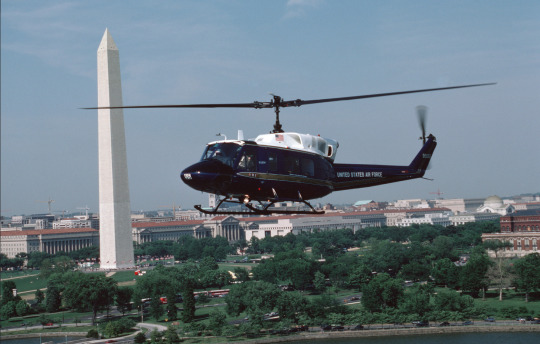
USAF 1st Helicopter Squadron UH-1N flying past the Washington Monument, Washington DC - 1988
#USAF#Air Force#Bell#UH-1#Huey#Twin Huey#Helicopter#VIP transport#1st Helicopter Squadron#Military aviation#special mission aircraft
21 notes
·
View notes
Text

Two 1st Special Operations Squadron A-1H Skyraiders escort an HH-53C Super Jolly Green Giant rescue helicopter in 1971. USAF
@kadonkey via X
385 notes
·
View notes
Text
Phantom Friday...
Pardo's push.

An epic story of guts and ingenuity. Captain Bob Pardo used his own damaged Phantom to push his wingman's crippled aircraft to an area safe for ejection. From Wikipedia: (they write it better than I could...)

Captain Bob Pardo (with Weapon Systems Officer 1st Lt Steve Wayne) and wingman Captain Earl Aman (with Weapon Systems Officer 1st Lt Robert Houghton) were assigned to the 8th Tactical Fighter Wing, 433rd Tactical Fighter Squadron, at Ubon Royal Thai Air Force Base, Thailand. In March 1967, they were trying to attack a steel mill in North Vietnam just north of Hanoi.
On March 10, 1967, the sky was clear for a bombing run, but both F-4 Phantom IIs were hit by anti-aircraft fire. Aman's plane took the worst damage; his fuel tank had been hit, and he quickly lost most of his fuel. Aman and Houghton then determined that they did not have enough fuel to make it to a KC-135 tanker aircraft over Laos.
To avoid having Aman and Houghton bail out over hostile territory, Pardo decided to try pushing the airplane. Pardo first tried pushing the plane using Aman's drag chute compartment but turbulence interfered.
Pardo then tried to use Aman's tailhook to push the plane. The Phantom, having been originally designed as a naval aircraft for the U.S. Navy and U.S. Marine Corps, was equipped with a heavy duty tailhook for landings aboard aircraft carriers and for emergency arrestments ashore. Aman lowered his tailhook and Pardo moved behind Aman until the tailhook was against Pardo's windscreen. Aman then shut down both of his J79 jet engines. The push worked, reducing the rate of descent considerably, but the tailhook slipped off the windscreen every 15 to 30 seconds, and each time Pardo had to reposition his plane to do it again. Pardo also struggled with a fire in one of his own engines and eventually had to shut it down. In the remaining 10 minutes of flight time, Pardo used the one last engine to slow the descent of both planes.
With Pardo's plane running out of fuel after pushing Aman's plane almost 88 miles (142 km), the planes reached Laotian airspace at an altitude of 6,000 feet (1,800 m). This left them about two minutes of flying time. Both crews ejected, evaded capture, and were picked up by rescue helicopters.
Initially Pardo was reprimanded for not saving his own aircraft but the case was re-evaluated in 1989 and all four crewmembers were awarded the Silver Star.
Epic!
29 notes
·
View notes
Text
"The US Air Force has been sending unmarked planes from Britain’s base on Cyprus to Israel since it began bombing Gaza, it can be revealed. The planes are all C-295 and CN-235 aircraft, which are believed to be used by American special forces. Declassified has found 18 of these aircraft which have gone from the sprawling British air base on Cyprus, RAF Akrotiri, to Israel’s coastal city Tel Aviv since October 7. Akrotiri is the key node in the international effort to arm and provide logistical support for Israel’s assault on Gaza. But the UK government has always refused to divulge any information about US activities at Akrotiri, which is known to include transporting weapons to Israel.
Asked in May how many US Air Force (USAF) flights had taken off from the base since October 7, defence minister Leo Docherty said: 'The Ministry of Defence does not comment on the operations of our Allies.' But Declassified discovered the unmarked planes that flew from Akrotiri to Israel from November to June have a serial number showing they are operated by the USAF. Most of these journeys had the flight number GONZO62. Six more unmarked C-130 planes have gone from Akrotiri to Tel Aviv since the bombing of Gaza began, which are believed to be USAF, but it was not possible for Declassified to locate their operator. The C-130 can carry 128 combat troops and almost 20 tonnes of cargo.
The new information could further implicate British ministers in war crimes in Gaza. In November 2023, a US military official revealed that American special forces were stationed in Israel and 'actively helping the Israelis.' ... Most of the unmarked planes show that they were recently at Fayetteville, North Carolina, which is home to Fort Liberty, the largest US Army base by population with nearly 50,000 active-duty soldiers. Formerly called Fort Bragg, it is home to the 1st Special Forces Command (Airborne) which 'assigns, equips, trains, certifies, and validates [Army Special Operations Forces] Soldiers and units to conduct global operations.' The Pentagon says this unit is 'the most adaptable and capable enabling force in the United States military.' The planes, the C-295 and CN-235, are produced by Airbus and believed to be used by 427th Special Operations Squadron which has been described as USAF’s 'most secretive squadron' and is based at Fort Liberty.
... Declassified has also found 26 marked USAF planes have arrived at RAF Akrotiri since the bombing of Gaza began. These have included 16 huge C-17 military transport aircraft from US bases in Germany, Spain and Kuwait. The C-17 is capable of transporting 134 personnel and many types of military equipment, including Abrams tanks and three Black Hawk helicopters. The US military notes that its role is to 'rapidly project and sustain an effective combat force close to a potential battle area.'"
21 notes
·
View notes
Photo


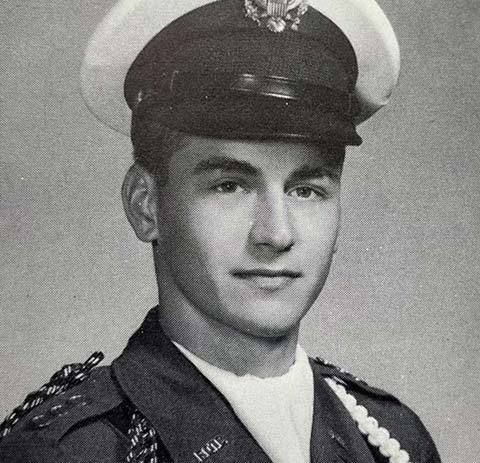
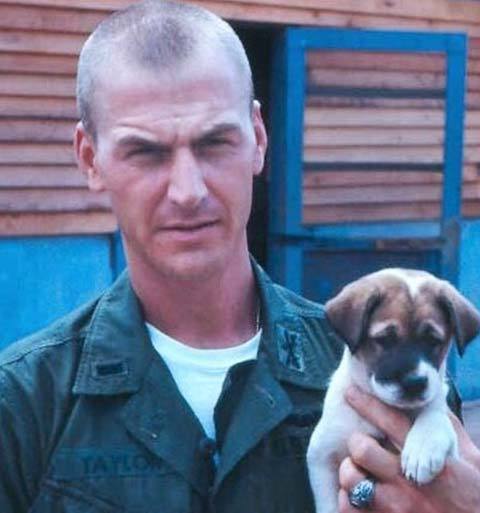

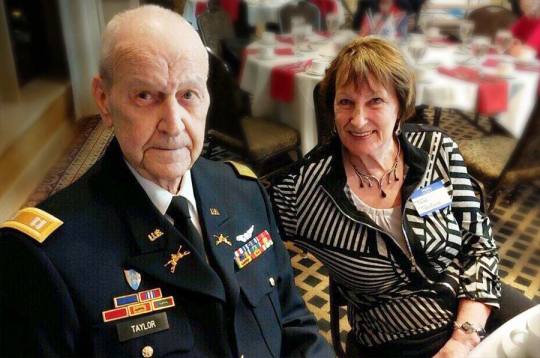
Larry Taylor was born in 1942 in Chattanooga, Tennessee. He grew up in a family and community that emphasized the importance of military service. His great-great-grandfather fought in the Civil War, his great-uncle in World War I and his father and uncles in World War II.
Larry Taylor joined the U.S. Army Reserve Officer Training Program at the University of Tennessee, Knoxville. Upon graduation in June 1966, he was commissioned as a second lieutenant in the Army Reserve, then joined the regular Army in August, volunteering as an armor officer.
He joined the U.S. Army Reserve Officer Training Program at the University of Tennessee, Knoxville. Upon graduation in June 1966, he was commissioned as a second lieutenant in the Army Reserve, then joined the regular Army in August, volunteering as an armor officer. After graduating from the U.S. Army Armor School at Fort Knox, Kentucky, Taylor quickly realized he was better suited to be a pilot than an armor officer. He had already obtained a fixed-wing pilot's license before joining the Army and thought that experience would make it easier to learn rotary-wing flying.
After receiving permission to train as a helicopter pilot, he attended the U.S. Army Primary Helicopter School at Fort Wolters, Texas, and then advanced helicopter training at Fort Rucker (renamed Fort Novosel in 2023), Alabama, where he qualified as an Army aviator in June 1967.
Taylor served in Vietnam from August 1967 to August 1968, flying some of the first Bell AH1-G Cobra attack helicopters in combat. Serving with D Troop (Air), 1st Squadron, 4th Cavalry, 1st Infantry Division, Taylor flew over 2,000 combat missions in UH-1 and Cobra helicopters. He was engaged by enemy fire 340 times and was forced down five times. The U.S. Army awarded him at least 50 combat decorations, including the Silver Star, 43 Air Medals, a Bronze Star and two Distinguished Flying Crosses. He also received the Republic of Vietnam Gallantry Cross with Bronze Star.
Among his many harrowing operations, the most dangerous and frightening took place on June 18, 1968, when he rescued a four-man long range patrol team at significant risk to his own life. For his heroic actions that night, the Army awarded him the Silver Star, which President Joe Biden upgraded to the Medal of Honor in 2023. Taylor concluded his military service as a captain with the 2nd Armored Cavalry in West Germany.
After his Army service, he operated a successful roofing and sheet metal company in Chattanooga and was involved with several veterans' organizations. He has also been a generous donor to charitable nonprofit organizations in the Chattanooga area. Taylor and his wife, Toni, reside in Signal Mountain, Tennessee.
(via Captain Larry L. Taylor | Medal of Honor Recipient | U.S. Army)
57 notes
·
View notes
Text
Today is the Day of Naval Fleet, and it made me think about Sark's actual status

As Wikipedia says:
"Commander (commonly abbreviated as Cmdr.) is a common naval officer rank as well as a job title in many armies. Commander is also used as a rank or title in other formal organizations, including several police forces. In several countries this naval rank is termed frigate captain.
...
Commander is a rank used in navies, but is very rarely used as a rank in armies. In most armies, the term "commander" is used only as a job title like "platoon commander", "brigade commander" and "squadron commander".
Actually, Naval Commander (Royal Navy, US Navy) is equal to Lieutenant colonel (Army) and Captain 2nd rank (Soviet/Russian Naval Fleet).
Captain 2nd rank is the commander of a ship of the same rank: large amphibious, missile and destroyers. BUT, as you know, Sark's ship is an entire aircraft carrier. That's a 1st rank ship so Sark cannot command there as his rank would be too low for that. The ship is commanded by the 1st rank senior officer (captain 1st rank).
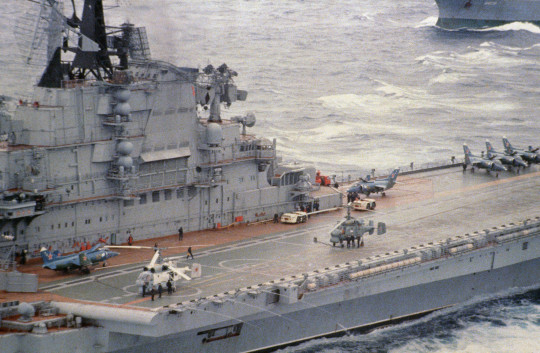
An aircraft carrier is a large surface ship of special purpose designed to provide air cover for the connection of ships, the landing of amphibious forces, air strikes on the connection of ships and individual enemy ships, on its coastal coastal defense, as well as for the transportation of goods and people, communication between the ships of the connection. Equipped with means to ensure the basing and functioning of aircraft. The main armament of an aircraft carrier is deck-based aircraft and helicopters (in case of the classic Grid - recognizers).
So Sark's status of a Commander might be just a job title but not the real rank.
#sark#commander sark#sarklives#sark lives#commandersark#random thoughts#tronblr#random theory#tronlives#tron lives#tron 1982#tron1982#classic tron#размышления ко дню вмф
14 notes
·
View notes
Text

#ThrowbackThursday
PN 7151
Helicopter, OH-6A, 65-12916
Vietnam, 1967
1st Air Cav Division, 1st SQ, 9th
Griffin, Robert
Fortunately, this photograph came with a caption.
"347/2 The LOH observation helicopter has been assigned to the 1st Air Cav Division's 1st Squadron, 9th Cavalry, the division reconnaissance unit. The ship is fully armored and can mount a 7.62 caliber mini-gun system."
credit: US Army Aviation Digest
#USArmyAviationMuseum #Armyhistory #ArmyMuseums #armyaviation #armyarchives
2 notes
·
View notes
Text

1970 Huey Hobby 174 ACH - Hobby Boss
i UH-1C Huey Gunship - 'Easy Rider' US Army 174th ACH Vietnam 1970 "Dolphins and Sharks" - The 174th Aviation Company was activated at Fort Benning, Georgia on October 1st, 1965. On March 15th, 1966, the 174th Aviation Company departed Fort Benning, Georgia for Oakland, California, arriving in Qui Nhon, South Vietnam on April 6th, 1966. On April 7th, 1966, the unit established a base camp at Phu Tai Valley west of Qui Nhon and became the 174th Assault Helicopter Company and part of Task Force Oregon and later part of Airmobile Light. The 174th AHC was initially assigned to the 52nd Aviation Battalion. On May 24th, 1966, the 174th AHC was placed under the operational control 14th Combat Aviation Battalion, 1st Aviation Bridge and conducted combat assault mission with their sister helicopter companies of the 71st AHC "Rattlers and Fire Birds", 161st AHC "Pelicans and Scorpions", 176th AHC "Minutemen and Musket", 178th ASHC "Boxcars and "C" Troop", 7th Squadron, 17th Air Cavalry's "Ruthless Riders". The majority of the 174th assaults were in the Phu Cat Mountains and associated valleys. The 174th Shark's Gun Platoon received permission from General Claire Chennault's Flying Tigers to use the famed Shark Mouth for their gunship platoon. The 174th Shark Mouth's painted helicopters became known through out Vietnam as the Sharks.
19 notes
·
View notes
Text
Books of 2023

Book 4 of 2023:
Title: Flashing Saber/Brennan’s War
Authors: Matthew Brennan
ISBN: 9781503102941
Tags: ACH-47 Guns-A-Go-Go Chinook, Forward Observer, FRA Groupement Mobile 100 (Indochina War), FSB Baldy (Vietnam War), FSB Bird (Vietnam War), FSB Cobra (Vietnam War), FSB English (Vietnam War), FSB Montezuma (Vietnam War), H-13 Sioux, KOR ROK Republic of Korea Army, LZ Hammond (Vietnam War), LZ Hereford (Vietnam War), LZ Montezuma (Vietnam War), LZ Porrazzo (Vietnam War), LZ Ross (Vietnam War), LZ Willy (Vietnam War), Military Police, OH-6, OV-1 Mohawk, UK Royal Malaysian Tracker School, US USA 11th Armored Cavalry Regiment, US USA 12th Cavalry Regiment, US USA 173rd Airborne Brigade, US USA 196th Light Infantry Brigade, US USA 1st Cavalry Division, US USA 1st ID, US USA 21st Field Artillery Bn, US USA 227th Assault Helicopter Bn, US USA 35th Infantry Regiment, US USA 35th Infantry Regiment - 1/35, US USA 4th ID, US USA 9th Cavalry - 1st Squadron (Headhunters), US USA 9th Cavalry Regiment, US USA Combat Trackers - K9, US USA LRRP Team (Vietnam War), US USA United States Army, USA Capt. James Taylor (MOH) (Vietnam War), USAF Phu Cat Airbase (Vietnam War), VNM 1968 Tet Offensive (1968) (Vietnam War), VNM 506 Valley, VNM A Shau Valley, VNM An Khe, VNM An Lao, VNM An Loc, VNM Battle of Hue City (1968) (Tet Offensive) (Vietnam War), VNM Battle of Khe Sanh (1968) (Tet Offensive) (Vietnam War), VNM Binh An, VNM Binh Dinh Province, VNM Bong Son, VNM Bong Son River, VNM Bu Dop Special Forces Camp (Vietnam War), VNM Camp Evans (Vietnam War), VNM Camp Radcliff (Vietnam War), VNM Chu Lai, VNM CIA Phung Hoang / Phoenix Program (1965-1972) (Vietnam War), VNM Crow's Foot War Zone, VNM Da Nang, VNM Deo Mang, VNM Deo Mang pass, VNM DRV NVA 18th Regiment, VNM DRV NVA 18th Regiment - 27th Co, VNM DRV NVA 22nd Regiment, VNM DRV NVA 2nd Division, VNM DRV NVA 33rd Regiment, VNM DRV NVA 3rd Division, VNM DRV NVA 812th Regiment, VNM DRV NVA Sang Vao (Yellow Star) Division, VNM DRV VC 2nd Regiment, VNM Duc Pho, VNM Hiep Duc, VNM Ho Bo Woods, VNM Hon Kon (Hong Kong Mountain), VNM Hue, VNM Khe Sanh, VNM Kim Son, VNM Kontum, VNM Lang Vei Special Forces Camp (Vietnam War), VNM Loc Ninh, VNM LZ Ross, VNM Mang Yang Pass, VNM Million Dollar Hill, VNM Monument Hill, VNM Nui Ba Ra (Mountain of the Old Man), VNM Operation Cravy Horse (1966) (Vietnam War), VNM Operation Masher (1966) (Vietnam War), VNM Perfume River, VNM Phouc Vinh, VNM Pleiku, VNM Quan Loi, VNM Quang Tri, VNM Que Son Valley, VNM Route 1, VNM Route 14, VNM Route 19, VNM Rung Sat Special Zone, VNM RVN ARVN Army of the Republic of Vietnam, VNM RVN ARVN Vietnamese Rangers - Biet Dong Quan, VNM RVN RVNP Can Sat National Police, VNM Saigon, VNM Song Re, VNM Soui Ca Mountains, VNM Tam Ky, VNM Tan Son Nhut Air Base, VNM The Graveyard, VNM Tiger Mountains, VNM USMC DHCB Dong Ha Combat Base (Vietnam War), VNM USMC KSCB Khe Sanh Combat Base (Vietnam War), VNM VC Valley, VNM Vietnam War (1955-1975), VNM Vinh Thanh Valley (Happy Valley), VNM War Zone C, VNM War Zone D, VNM French Indochina War (1946-1954)
Rating: 5 Stars
Subject: Books.Military.20th-21st Century.Asia.Vietnam War.US Army.Infantry
Description:
"The division's expendables." That's what one division commander called the 1/9th Cavalry Blue platoons during the Vietnam War. The Blues, as they were called, were perpetually understrength and considered to be acceptable losses in hopeless situations--but their amazingly successful record proved otherwise.
Flashing Saber is memoir about mortal combat with the First Air Cavalry Division's reconnaissance squadron. Included is the account of an air-ground raid that killed more high-ranking enemy officers than any similar engagement of the war: a full colonel, four majors and four senior captains.
An expansion and careful reworking of his previous work, Brennan's War, published in 1985, and in the vein of classic memoirs by Johnnie Clark and Frederick Downs, the book is a harrowing firsthand account of life and death in war.****
Review: I’ve read Brennan’s previous book, Brennan’s War shortly after it was published in 1985. A lot of what was in it stuck with me as a classic retelling of some ones honest look at their own experience, their failures/stupidity, and both good and bad choices.
This version adds a lot more nuance and more understanding to what he experienced, and the added snippets add a lot to round out some of the people and tales without watering down the experiences or raw emotion.
His experiences are unique due to his circumstances, and most importantly, he has an excellent way of telling the story. It’s not just a cut and dry “i went here, I did this...” ... but he understands narrative, he understands human emotion, and he is able to convey things in a way many other authors of this genre actually fail to do.
3 notes
·
View notes
Text
Thoughts at 2pm...
Finished tagging a 2nd book, and all of the tags are below the cut line.
ACH-47 Guns-A-Go-Go Chinook, Forward Observer, FRA Groupement Mobile 100 (Indochina War), FSB Baldy (Vietnam War), FSB Bird (Vietnam War), FSB Cobra (Vietnam War), FSB English (Vietnam War), FSB Montezuma (Vietnam War), H-13 Sioux, KOR ROK Republic of Korea Army, LZ Hammond (Vietnam War), LZ Hereford (Vietnam War), LZ Montezuma (Vietnam War), LZ Porrazzo (Vietnam War), LZ Ross (Vietnam War), LZ Willy (Vietnam War), Military Police, OH-6, OV-1 Mohawk, UK Royal Malaysian Tracker School, US USA 11th Armored Cavalry Regiment, US USA 12th Cavalry Regiment, US USA 173rd Airborne Brigade, US USA 196th Light Infantry Brigade, US USA 1st Cavalry Division, US USA 1st ID, US USA 21st Field Artillery Bn, US USA 227th Assault Helicopter Bn, US USA 35th Infantry Regiment, US USA 35th Infantry Regiment - 1/35, US USA 4th ID, US USA 9th Cavalry - 1st Squadron (Headhunters), US USA 9th Cavalry Regiment, US USA Combat Trackers - K9, US USA LRRP Team (Vietnam War), USA Capt. James Taylor (MOH) (Vietnam War), USAF Phu Cat Airbase (Vietnam War), VNM 1968 Tet Offensive (1968) (Vietnam War), VNM 506 Valley, VNM A Shau Valley, VNM An Khe, VNM An Lao, VNM An Loc, VNM Battle of Hue City (1968) (Tet Offensive) (Vietnam War), VNM Battle of Khe Sanh (1968) (Tet Offensive) (Vietnam War), VNM Binh An, VNM Binh Dinh Province, VNM Bong Son, VNM Bong Son River, VNM Bu Dop Special Forces Camp (Vietnam War), VNM Camp Evans (Vietnam War), VNM Camp Radcliff (Vietnam War), VNM Chu Lai, VNM CIA Phung Hoang / Phoenix Program (1965-1972) (Vietnam War), VNM Crow's Foot War Zone, VNM Da Nang, VNM Deo Mang, VNM Deo Mang pass, VNM DRV NVA 18th Regiment, VNM DRV NVA 18th Regiment - 27th Co, VNM DRV NVA 22nd Regiment, VNM DRV NVA 2nd Division, VNM DRV NVA 33rd Regiment, VNM DRV NVA 3rd Division, VNM DRV NVA 812th Regiment, VNM DRV NVA Sang Vao (Yellow Star) Division, VNM DRV VC 2nd Regiment, VNM Duc Pho, VNM Hiep Duc, VNM Ho Bo Woods, VNM Hon Kon (Hong Kong Mountain), VNM Hue, VNM Khe Sanh, VNM Kim Son, VNM Kontum, VNM Lang Vei Special Forces Camp (Vietnam War), VNM Loc Ninh, VNM LZ Ross, VNM Mang Yang Pass, VNM Million Dollar Hill, VNM Monument Hill, VNM Nui Ba Ra (Mountain of the Old Man), VNM Operation Cravy Horse (1966) (Vietnam War), VNM Operation Masher (1966) (Vietnam War), VNM Perfume River, VNM Phouc Vinh, VNM Pleiku, VNM Quan Loi, VNM Quang Tri, VNM Que Son Valley, VNM Route 1, VNM Route 14, VNM Route 19, VNM Rung Sat Special Zone, VNM RVN ARVN Army of the Republic of Vietnam, VNM RVN ARVN Vietnamese Rangers - Biet Dong Quan, VNM RVN RVNP National Police, VNM Saigon, VNM Song Re, VNM Soui Ca Mountains, VNM Tam Ky, VNM Tan Son Nhut Air Base, VNM The Graveyard, VNM Tiger Mountains, VNM USMC DHCB Dong Ha Combat Base (Vietnam War), VNM USMC KSCB Khe Sanh Combat Base (Vietnam War), VNM VC Valley, VNM Vietnam War (1955-1975), VNM Vinh Thanh Valley (Happy Valley), VNM War Zone C, VNM War Zone D, VNM French Indochina War (1946-154)
1 note
·
View note
Text

On 7 January 1967, John Steinbeck was at Pleiku, Vietnam, where he flew aboard a UH-1 Huey helicopter with D Troop, 1st Squadron, 10th Cavalry. He wrote the following about the helicopter pilots:
“I wish I could tell you about these pilots. They make me sick with envy. They ride their vehicles the way a man controls a fine, well-trained quarter horse. They weave along stream beds, rise like swallows to clear trees, they turn and twist and dip like swifts in the evening. I watch their hands and feet on the controls, the delicacy of the coordination reminds me of the sure and seeming slow hands of (Pablo) Casals on the cello. They are truly musicians’ hands and they play their controls like music and they dance them like ballerinas and they make me jealous because I want so much to do it. Remember your child night dream of perfect flight free and wonderful? It’s like that, and sadly I know I never can. My hands are too old and forgetful to take orders from the command center, which speaks of updrafts and side winds, of drift and shift, or ground fire indicated by a tiny puff or flash, or a hit and all these commands must be obeyed by the musicians hands instantly and automatically. I must take my longing out in admiration and the joy of seeing it. Sorry about that leak of ecstasy, Alicia, but I had to get it out or burst.”
1 note
·
View note
Text
The Evolution from Bell OH-58D Kiowa Warrior to Bell 407M Special Missions Aircraft
On 15 April 2016, 32 Bell OH-58D Kiowa Warrior Light Observation Helicopters flew in formation from Fort Bragg, in the US, creating a Guinness World Record for the Largest Helicopter Formation Flight in history. The event was organized by 1st Squadron, 17th Cavalry Regiment, 82nd Combat Aviation Brigade of the U.S. Army and marked part of the grand finale for the U.S. military fleet in a spectacular swansong for the platform and those who flew in them. The Kiowa Warrior’s reputation as a capable and rugged aircraft started with the OH-58A, which launched in 1968. It underwent two rounds of modifications and upgrades until the world-record setting OH-58D flew in 1983, with its upgraded engine and transmission.
#military #defense #defence #militaryleak #helicopter
On 15 April 2016, 32 Bell OH-58D Kiowa Warrior Light Observation Helicopters flew in formation from Fort Bragg, in the US, creating a Guinness World Record for the Largest Helicopter Formation Flight in history. The event was organized by 1st Squadron, 17th Cavalry Regiment, 82nd Combat Aviation Brigade of the U.S. Army and marked part of the grand finale for the U.S. military fleet in a…

View On WordPress
0 notes
Text



When his SR-71 pitched up and slammed into a KC-135Q tanker at 26,000 feet, Blackbird RSO Maj. Mortimer J. Jarvis knew it was time to go. The pilot, Lt. Col. Buddy Brown, ejected from the damaged SR-71 and Mortimer was right behind him.
While doing research on Buddy Brown I found this article on The X-Hunters website. I was living at Beale when this happened and I remember hearing about Colonel Brown breaking both of his legs, he recovered and went on to have a fantastic career in the Air Force. Today October 14, 2023, Habu’s family is all saddened to hear that Mort’s wife Arlene Jarvis passed away they had been married for 70 years❤️
On Jun. 17, 1970, Lt. Col. Buddy L. Brown and Maj. Mortimer J. Jarvis of the 1st Strategic Reconnaissance Squadron were scheduled for a crew training flight. The crew was also to test a newly installed defensive avionics system (DEF F) over the range at Eglin Air Force Base (AFB), Florida.
Two KC-135Q tankers took off first and proceeded to the BUSY PALACE refueling track near Albuquerque, New Mexico.
Brown and Jarvis entered the cockpit of the SR-71 and prepared for takeoff. Engine start and run-up were completed without incident. Using call sign ASPEN 33, they took off from Beale AFB, California, and proceeded to BUSY PALACE.
ASPEN 33 accomplished climb, acceleration, and high-Mach cruise, followed by a descent into the BUSY PALACE refueling track. Brown hooked up with the first KC-135Q, OSSAL 59, without incident. After transferring 35,000 pounds of fuel, Brown disconnected, and maneuvered to hook up with OSSAL 73, near El Paso, Texas. Contact with the second tanker was smooth and effective. Three minutes later, following transfer of 16,000 pounds of fuel, the SR-71 suddenly dropped four to six feet. As Brown attempted to stabilize the aircraft, it pitched up and struck the tanker. The crew of OSSAL 73 heard and felt the collision. The boomer, CMSgt. Eckley watched in horror as the aircraft pitched upward with such rapidity that he had no time to take action or call for a breakaway. The black shape of the SR-71 briefly filled the boomer’s window, the tanker shuddered with the impact, and the stricken spyplane dropped away.
The Blackbird’s canopy glass fractured, causing Brown to lose all outside references. Also, his control panel had broken loose from it mounts and he was unable to control the airplane. Brown called Jarvis over the intercom to order him to eject, but Jarvis never heard him. Jarvis saw the flash as Brown bailed out, and the PILOT EJECTED light on his instrument panel. Jarvis then ejected, and both crewmembers parachuted to safety.
Eckley reported the collision to the flight crew over the tanker’s intercom. Maj. Roland and Capt. Messenger checked their flight controls and determined that the KC-135 was still airworthy. They then reported the accident to Albuquerque Air Traffic Control Center and told them to initiate recovery procedures for the downed SR-71 crew. Moments earlier, when his SR-71 pitched up and slammed into a KC-135Q tanker at 26,000 feet, Jarvis knew it was time to go. The pilot, Lt. Col. Buddy Brown, ejected from the damaged SR-71 and Jarvis was right behind him.
It was June 1970 and the crew was high above the desert landscape near El Paso, Texas, testing out new equipment in the aircraft.
With both crew members safely on the ground, the 1st Strategic Reconnaissance Squadron airmen, out of Beale Air Force Base, were rescued by a helicopter from Fort Bliss.
The Yuba City resident ( Mort Jarvis )continued flying as a navigator in the SR-71 for another three years and found satisfaction in the intelligence being gathered whether it was mapping radar sites or taking photographs.
He retired as a Lt. Colonel in 1973 after 20 years in the Air Force. Happy to report that Mort Jarvis is living in California. Buddy Brown passed away several years ago. All of the Air Force officers that ejected from the SR-71 survived.
Linda Sheffield Miller
@Habubrats71 via X



16 notes
·
View notes
Text
DOD Featured Photos
Big Bang
An infantryman assigned to the 1st Battalion, 6th Infantry Regiment, 2nd Armored Brigade Combat Team… Photo Details >
Abandon Ship
Marines assigned to the Combat Logistics Battalion 6, Combat Logistics Regiment 2, 2nd Marine Logist… Photo Details >
Vertical Replenishment
An MH-60S helicopter attached to the ‘Tridents’ of Helicopter Sea Combat Squadron 9 conducts a verti… Photo Details…

View On WordPress
0 notes
Photo
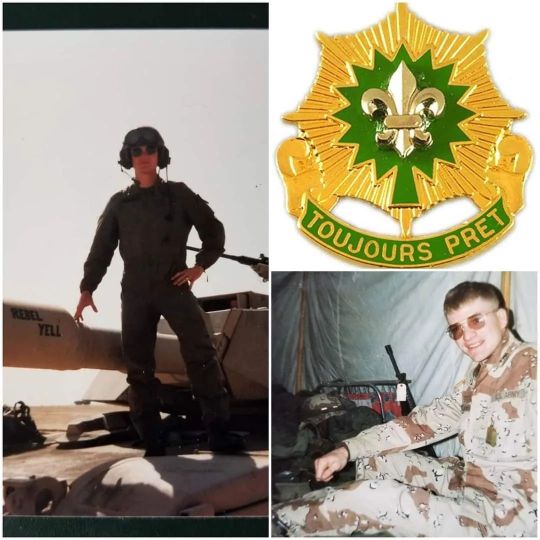
32 years ago, on 24 February, the ground war began...the day before was filled with last minute preparations and internal reflection...the largest assemblage of armor and ground forces since WWII OPERATION DESERT STORM At 0330, on G+2 (Tuesday 26 February) the Regiment received new orders from VII Corps: To find and fix the Iraqi Republican Guards “Elite” Tawakalna Division. The Dragoon Battle Group was to “Hold the Nose” while the corps’ heavier divisions came around “To kick them in the rear”, to steal a phrase from another of the Regiments Corps Commanders of the past. All three squadrons soon became involved in the heaviest fighting the Regiment would be involved in during the 100-Hour War, 1st (WAR EAGLE) Squadron tasked with the “mopping up” the remnants of the 12th Division, while 2nd (COUGER) and 3rd (WOLFPACK) Squadrons fought two brigades of the Tawakalna. The weather dried out from the previous evening’s storms, but a heavy sandstorm came up about mid-morning, grounding most of the regiment’s aviation assets. The winds also hid the battlefield from the enemy, giving the Dragoon’s a distinct advantage with its thermal sights and laser rangefinders. This fight would later be known as “THE BATTLE OF 73 EASTING”, which would turn out to be the “Last great Tank Battle of the 20th Century”. The Regiment’s M1A1 Tanks, and M2/M3 Bradley Fighting Vehicles (BFV) proved to be far superior to the Iraqi BMP-1’s and T-72’s, and the Regiment’s troopers outperformed the Iraqi “elite” forces. Some tank gunners reported firing at ranges of 3,800 meters. Iraqi POW’s later told interrogators that could hear the U.S. tanks, but couldn’t see them, and didn’t realize they were under fire until the turret from the T-72 next to them blew off. The Regimental Support Squadron (RSS), who were affectionately known as the “Buffalo Herd”, also received its own “Baptism of Fire” when it was attacked by ten Iraqi MTLB’s (Armored Personnel Carriers). The Operational Readiness Float (ORF) Platoon, led by LT Kirkland, assigned as a security element for the squadron along with 4th (RED CATCHERS) squadron’s Cobra helicopter’s quickly destroyed this threat. https://www.instagram.com/p/CpAY2WCg6Ih/?igshid=NGJjMDIxMWI=
0 notes
Photo

UH-1Y Venom // United States Marine Corps
#United States Marine Corps#U.S. Marine Corps#USMC#3rd Rad BN#3rd Radio Battalion#III MEF#III Marine Expeditionary Forces#3rd Marine Expeditionary Force#3rd Marine Division#3rd MARDIV#MCB Hawaii#Marine Corps Base Hawaii#HMLA 367#1st Marine Aircraft Wing#1st MAW#Marine Light Attack Helicopter Squadron 367#UH-1Y#UH-1Y Venom#Venom#Bell Helicopters#Super Huey#Huey#Marine Air-Ground Task Force#MAGTF#utility helicopter#helicopter#Exercise Intrepid Tiger#Intrepid Tiger II#Intrepid Tiger II 21
8 notes
·
View notes